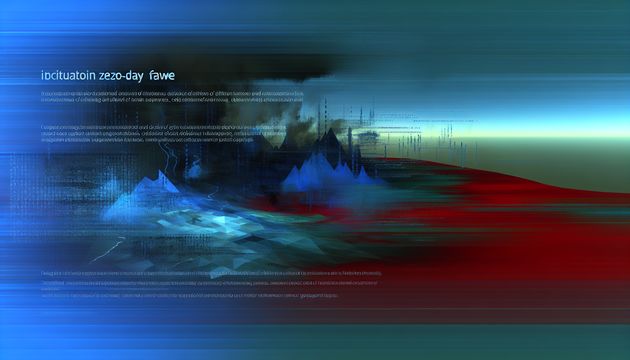
The Play Ransomware Threat: Evolution, Tactics, and Defense
The Play ransomware group, also known as Playcrypt, has emerged as a formidable adversary in the cybersecurity realm. Since its first reported activities in June 2022, the group has rapidly expanded its operations, targeting a diverse array of sectors, including critical infrastructure across multiple continents. By 2024, Play was recognized as one of the most active ransomware groups globally, leveraging a ransomware-as-a-service (RaaS) model to scale its operations effectively. This model allows affiliates to deploy ransomware attacks while sharing profits with the core developers, significantly increasing the number of victims. The group’s sophisticated methods and aggressive tactics have made it a significant threat, as highlighted in a joint advisory by the FBI, CISA, and the Australian Cyber Security Centre.
Background on Play Ransomware
Emergence and Evolution
The Play ransomware group, also known as Playcrypt, emerged as a significant threat in the cybersecurity landscape almost three years ago. The first public reports of their activities appeared in June 2022, when victims began reaching out for assistance on platforms like BleepingComputer. Initially, the group targeted a diverse range of sectors, including critical infrastructure, and rapidly expanded its operations across North America, South America, and Europe.
The Play ransomware gang quickly gained notoriety for its aggressive tactics and sophisticated methods. By 2024, it was recognized as one of the most active ransomware groups globally. The group’s operations are characterized by their use of ransomware-as-a-service (RaaS), which allows affiliates to deploy ransomware attacks while sharing profits with the core developers. This model has enabled Play to scale its operations and increase the number of victims significantly.
Attack Techniques and Tools
Play ransomware is known for its advanced attack techniques and the use of custom tools to enhance its operations. One of the key strategies employed by the group is the exploitation of vulnerabilities in remote monitoring and management (RMM) tools, such as SimpleHelp. These vulnerabilities allow the attackers to gain initial access to target networks. Once inside, they create admin accounts and deploy backdoors using tools like Sliver beacons, setting the stage for future ransomware attacks.
A distinctive feature of Play ransomware is its use of a custom Volume Shadow Copy Service (VSS) Copying Tool. This tool enables the attackers to steal files from shadow volume copies, even when these copies are in use by other applications. This capability allows the group to exfiltrate data without triggering conventional security alerts, making detection and prevention more challenging for defenders.
Ransom Demands and Negotiation Tactics
Unlike many other ransomware groups, Play ransomware does not use a Tor-based negotiation page. Instead, the group conducts ransom negotiations via email, adding a layer of complexity to the communication process. This approach can make it more difficult for victims to track and verify the authenticity of the ransom demands.
The group employs a dual-extortion model, where they not only encrypt the victim’s data but also steal sensitive documents. These documents are then used as leverage to pressure victims into paying the ransom, under the threat of publishing the stolen data on the gang’s dark web leak site. In some cases, victims are also contacted via phone calls and threatened to pay the ransom to prevent their data from being leaked online.
Impact and High-Profile Victims
As of May 2025, the Play ransomware group had breached approximately 900 organizations, according to a joint advisory by the FBI, CISA, and the Australian Cyber Security Centre. This figure represents a threefold increase in the number of victims since October 2023, highlighting the rapid expansion of the group’s operations.
The group’s victims span a wide range of sectors, including critical infrastructure, cloud computing, and retail. Notable high-profile victims include Rackspace, the City of Oakland in California, Dallas County, car retailer giant Arnold Clark, the Belgian city of Antwerp, doughnut chain Krispy Kreme, and American semiconductor supplier Microchip Technology. These incidents underscore the group’s ability to target and compromise organizations of varying sizes and industries.
Defensive Measures and Recommendations
In response to the growing threat posed by Play ransomware, cybersecurity agencies have issued several recommendations to help organizations defend against these attacks. Key measures include keeping systems, software, and firmware up to date to reduce the likelihood of unpatched vulnerabilities being exploited. Implementing multifactor authentication (MFA) across all services, with a focus on VPN, webmail, and accounts with access to critical systems, is also strongly advised.
Organizations are encouraged to conduct regular security assessments and vulnerability scans to identify and remediate potential weaknesses in their networks. Additionally, training employees to recognize phishing attempts and other social engineering tactics can help prevent initial access by ransomware operators.
Future Outlook and Challenges
The Play ransomware group’s continued evolution and adaptation present ongoing challenges for cybersecurity professionals. The group’s use of recompiled malware in every attack makes it more difficult for security solutions to detect and block their activities. As the group continues to exploit new vulnerabilities and refine its tactics, organizations must remain vigilant and proactive in their defense strategies.
Collaboration between law enforcement agencies and cybersecurity experts will be crucial in countering the threat posed by Play ransomware. Sharing threat intelligence and best practices can help organizations better understand the tactics, techniques, and procedures used by the group, enabling more effective defenses against future attacks.
Conclusion
The Play ransomware group’s relentless evolution and adaptation continue to pose significant challenges for cybersecurity professionals. Their ability to exploit new vulnerabilities and refine tactics underscores the necessity for organizations to remain vigilant and proactive in their defense strategies. The collaboration between law enforcement agencies and cybersecurity experts is crucial in countering the threat posed by Play ransomware. Sharing threat intelligence and best practices can help organizations better understand the tactics, techniques, and procedures used by the group, enabling more effective defenses against future attacks. For more detailed insights, refer to the joint advisory by the FBI, CISA, and the Australian Cyber Security Centre.
References
- FBI, CISA, and the Australian Cyber Security Centre. (2025). FBI: Play Ransomware Breached 900 Victims, Including Critical Organizations. BleepingComputer



